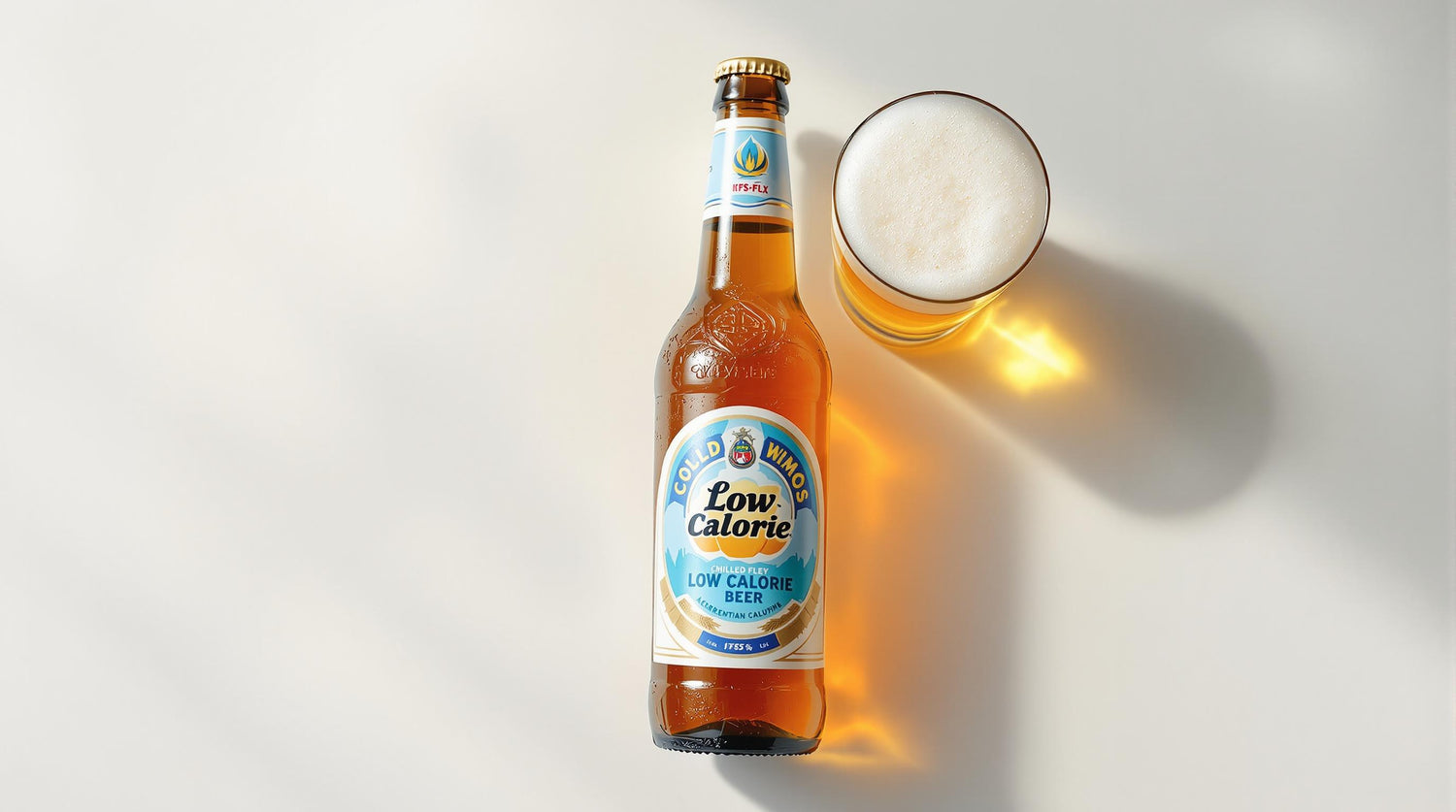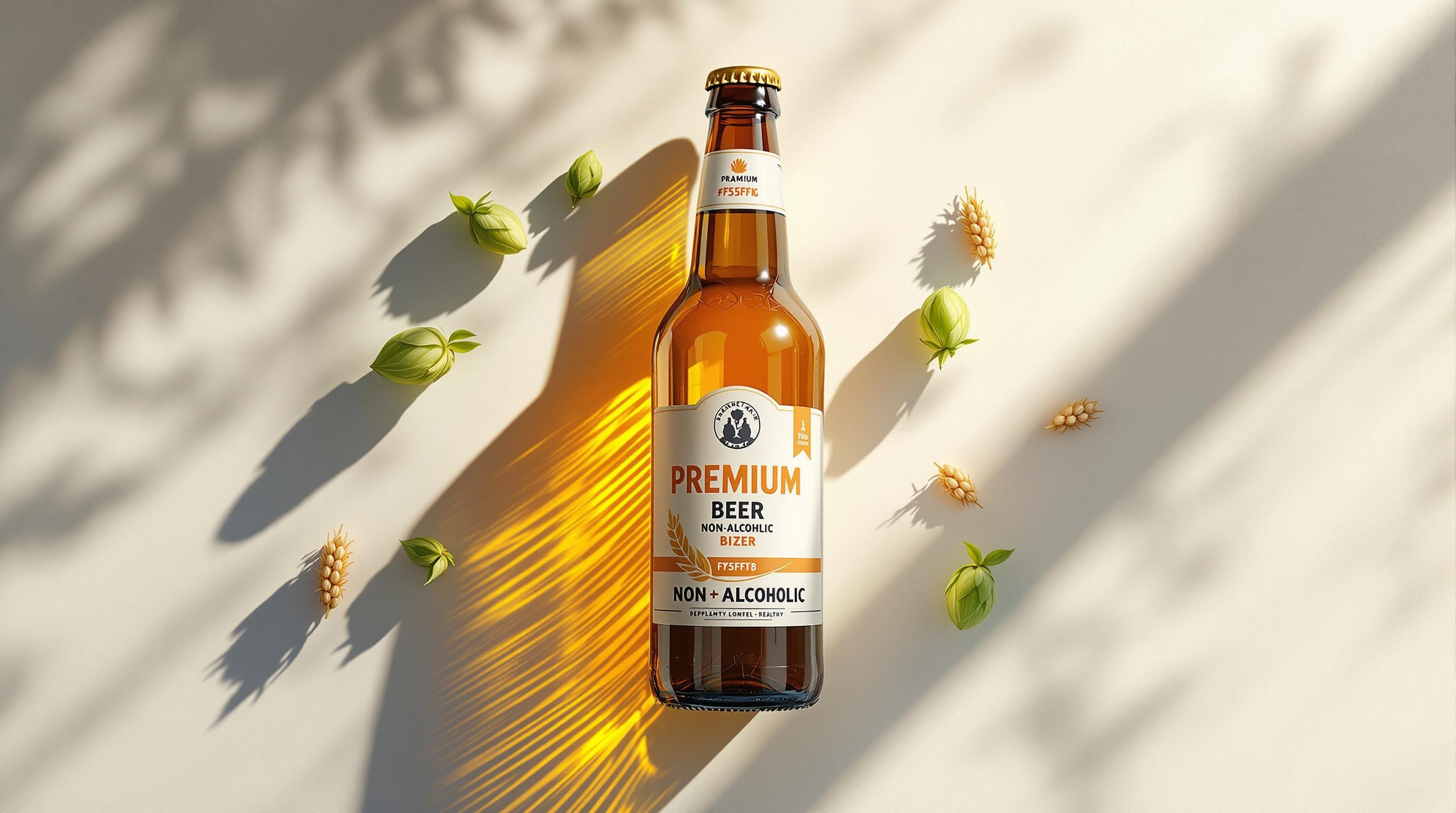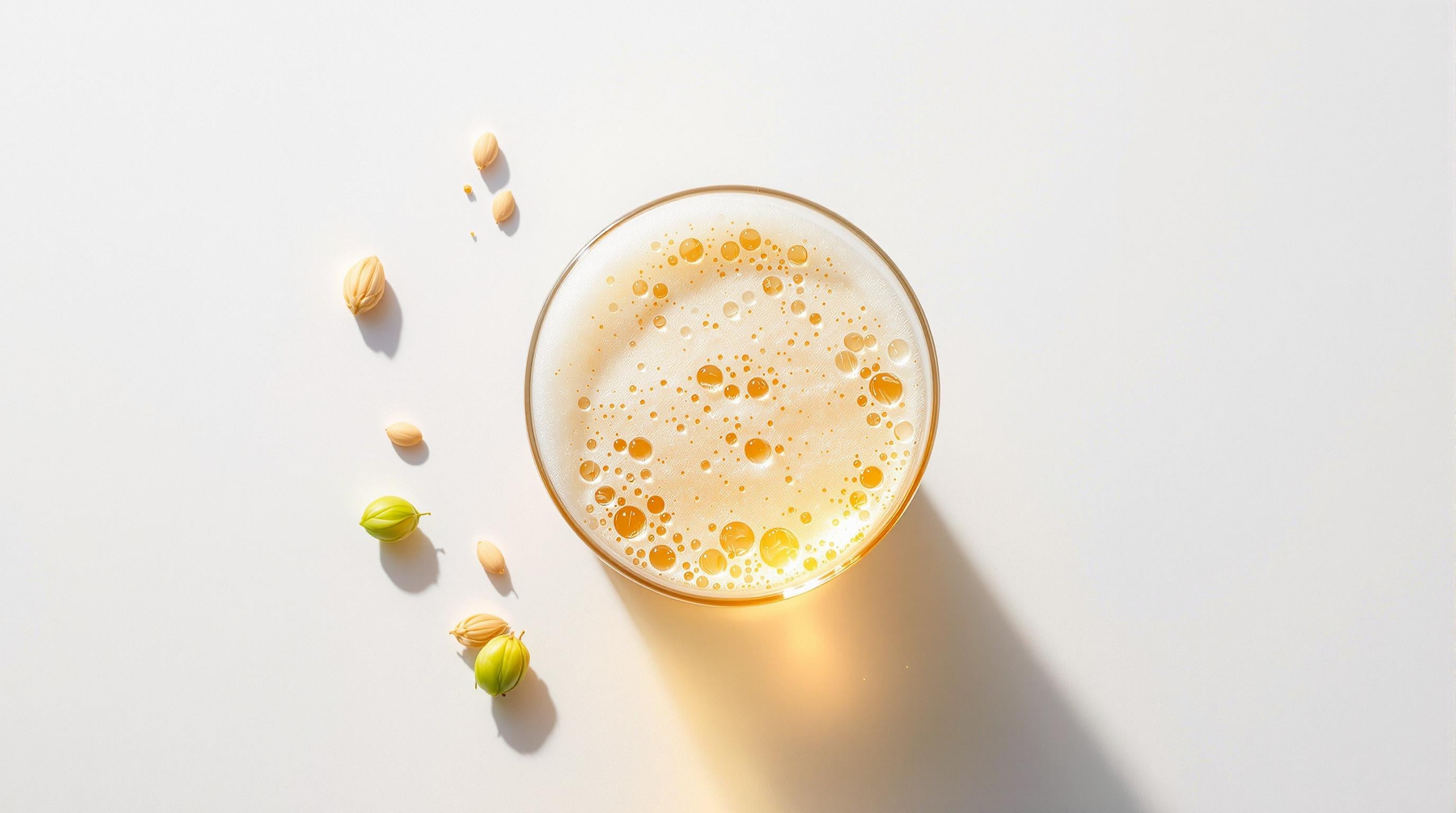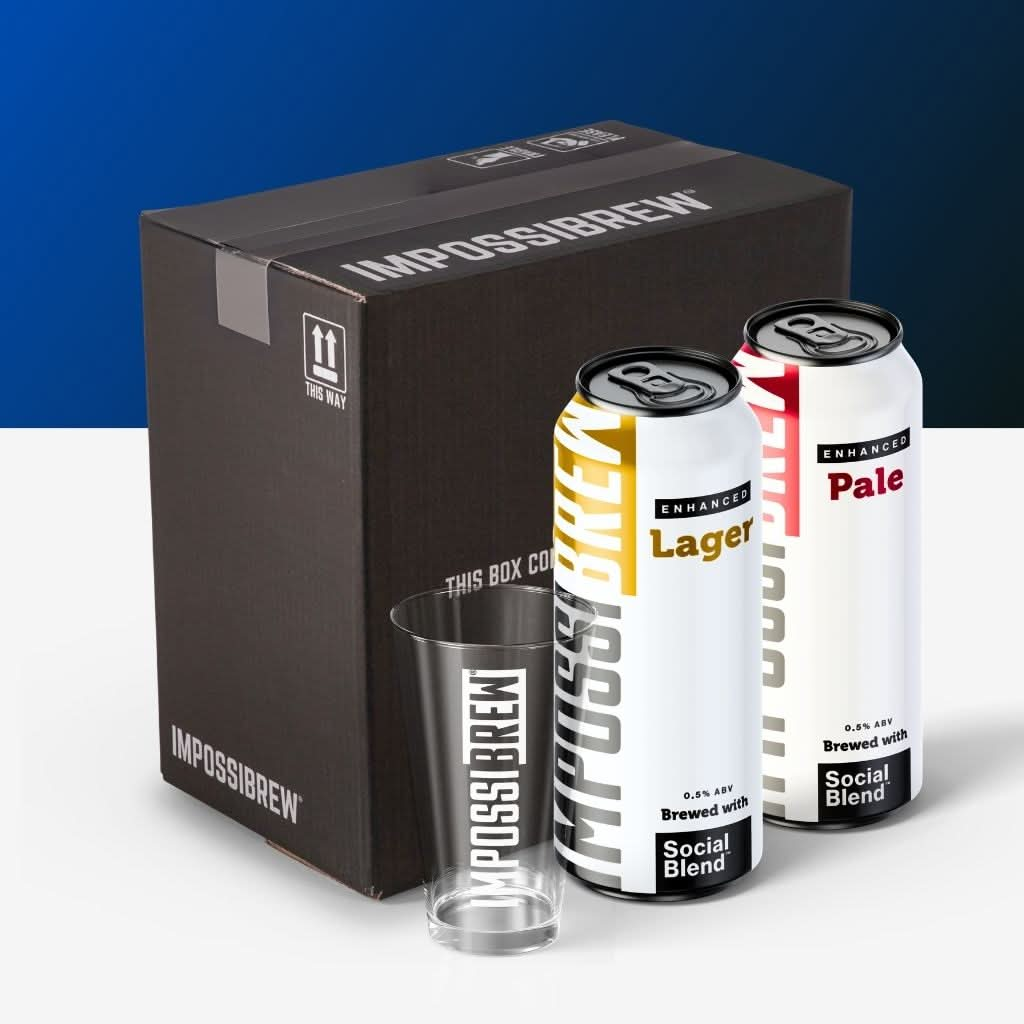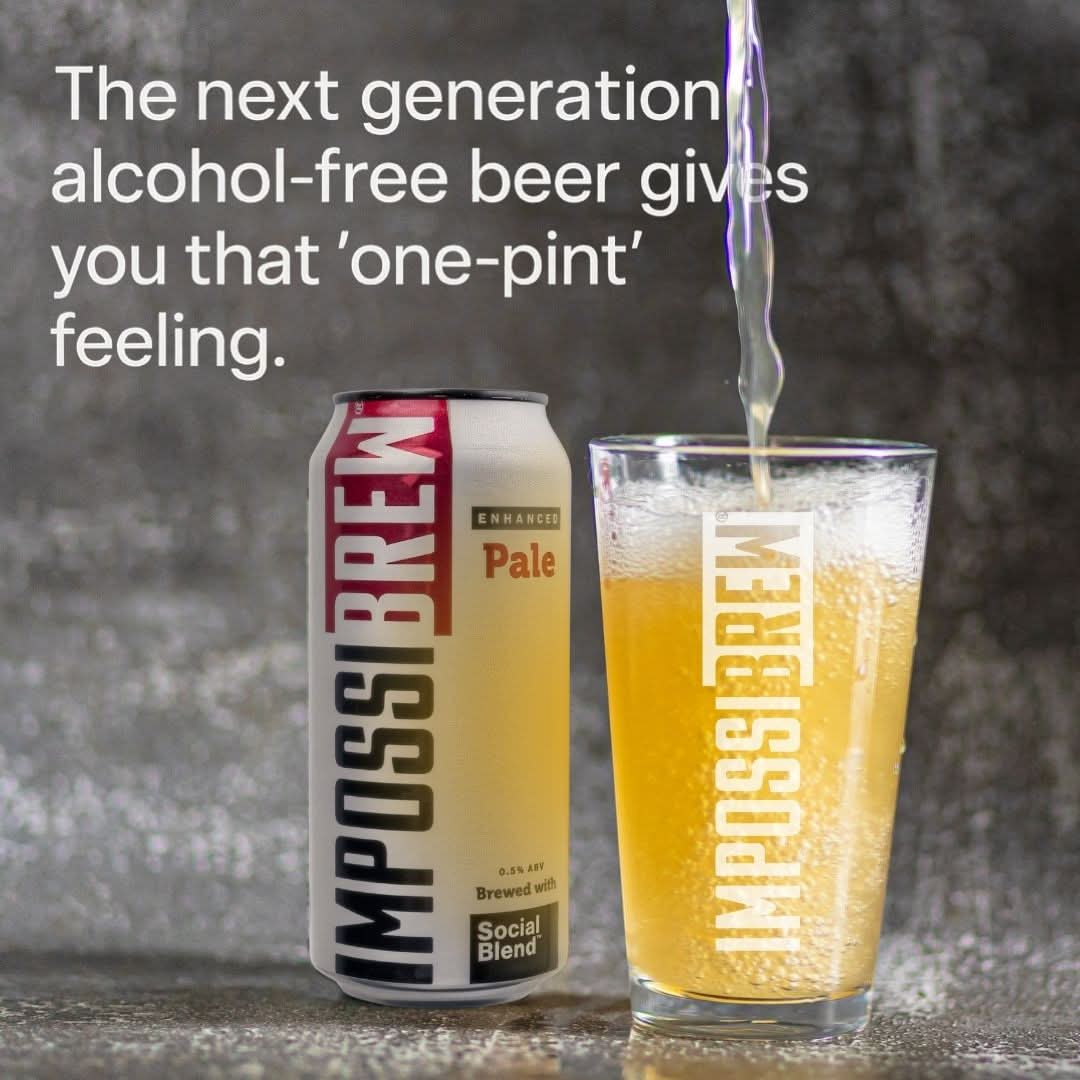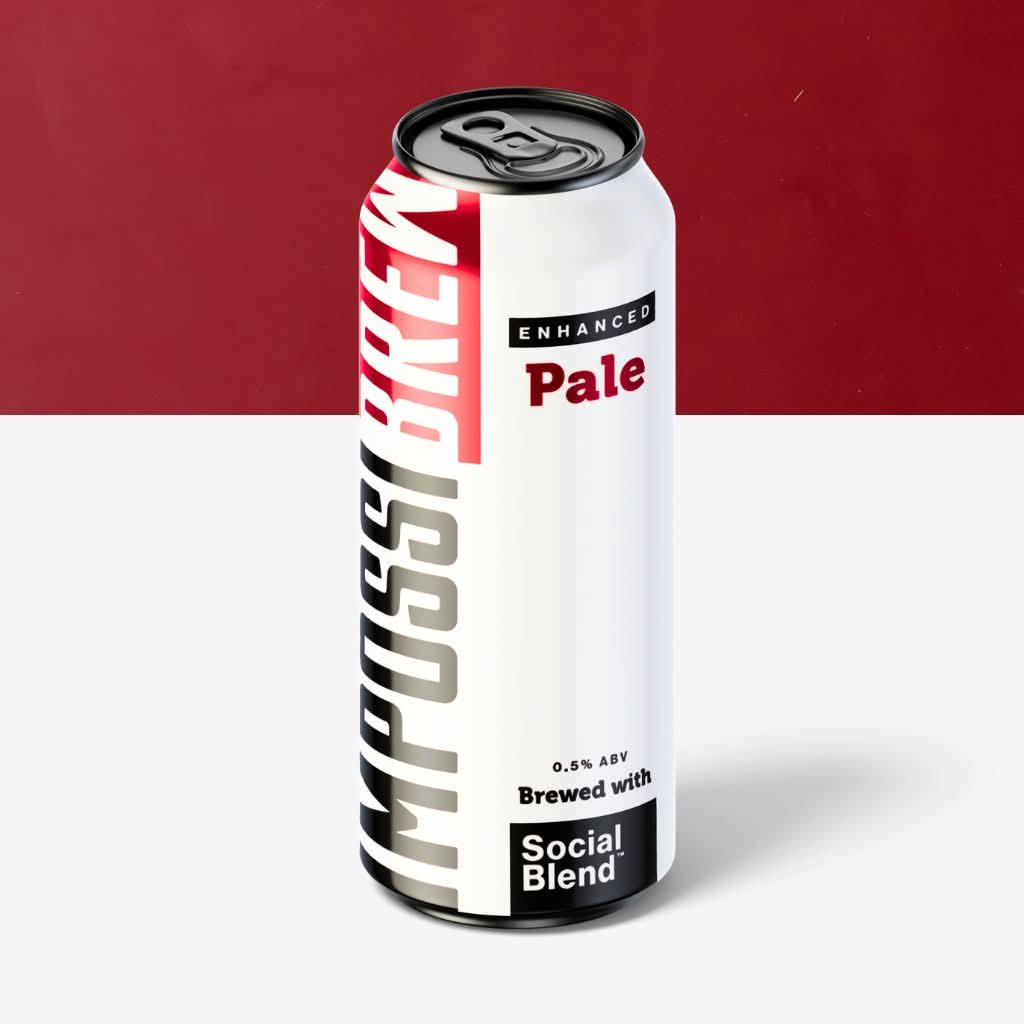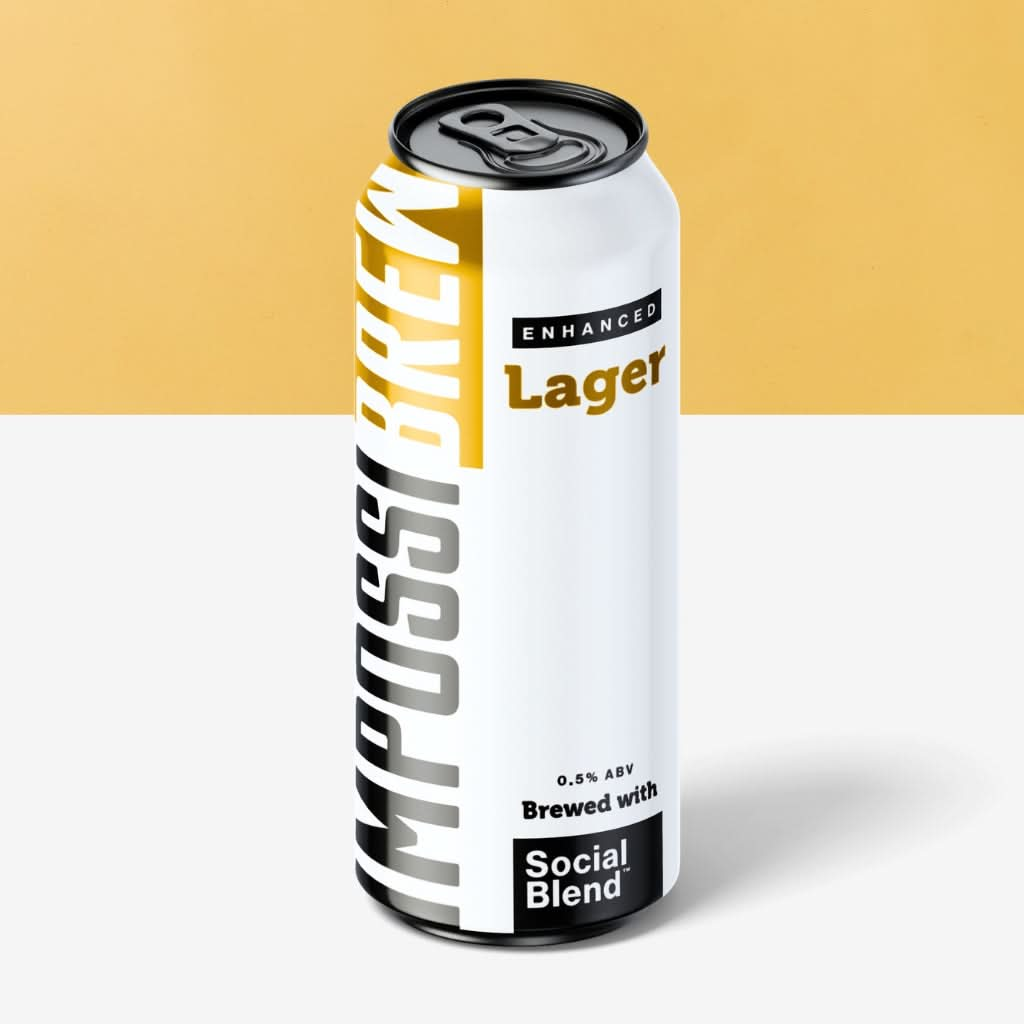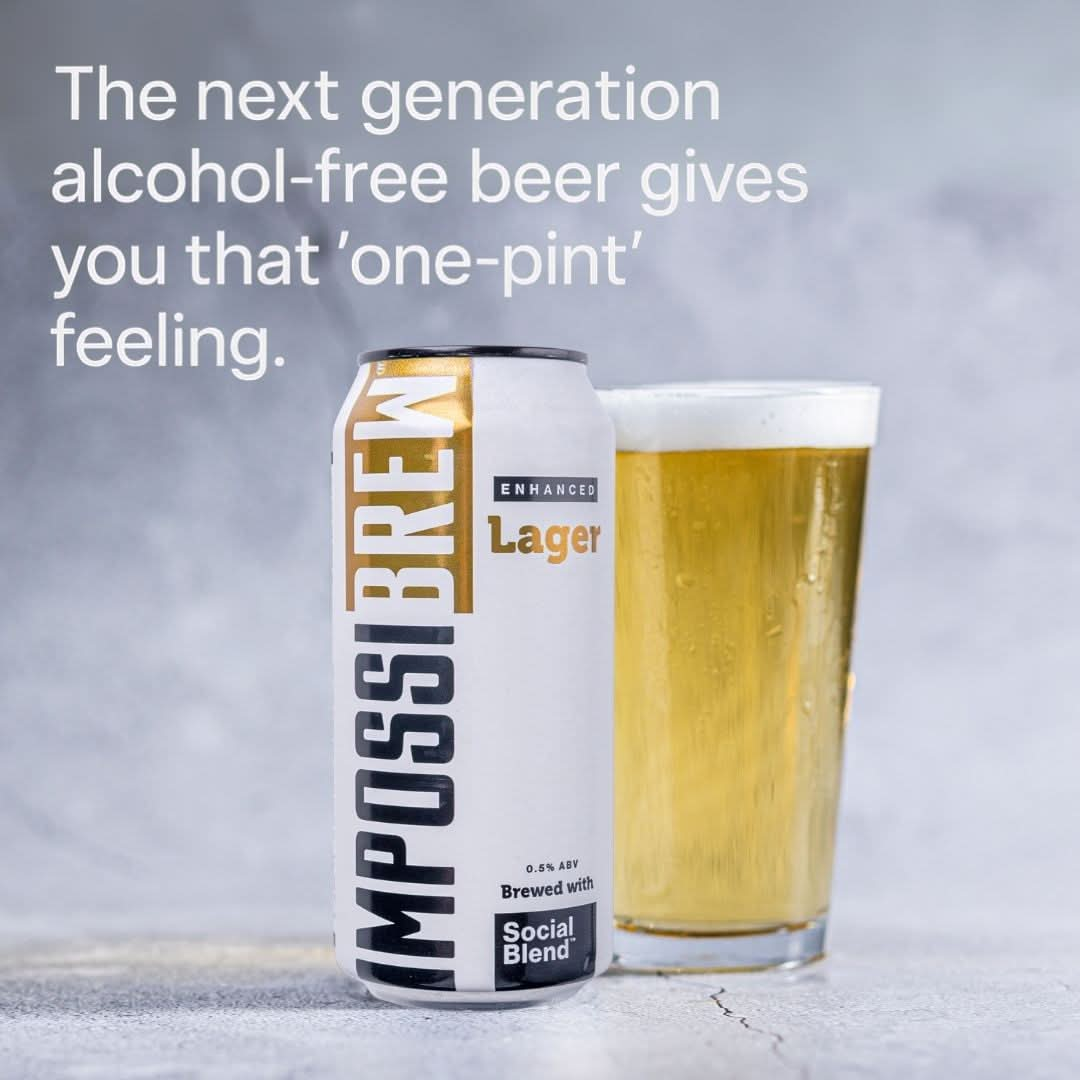Looking for a beer that fits your health goals? Low-calorie beers are booming, offering fewer calories without sacrificing flavor. Here’s why they matter and how they’re made:
- Why They’re Popular: Health-conscious drinkers want options that fit their active lifestyles and dietary needs, like gluten-free or vegan.
- How Calories Are Cut: Brewers adjust fermentation, use low-attenuation yeast, and experiment with ingredients to reduce calories while keeping the taste.
- Non-Alcoholic Options: Brands like IMPOSSIBREW® use advanced techniques to create flavorful, functional beers with as few as 15 calories per serving.
Quick Comparison
| Beer Type | Calories (per serving) | Features |
|---|---|---|
| Molson Canadian 67 | 67 | Low-carb |
| Michelob Ultra | 95 | Light lager |
| IMPOSSIBREW® Enhanced Lager | 15 | Gluten-free, vegan, nootropics |
Low-calorie beers are reshaping the market, offering healthier choices without compromising on the beer experience. Read on to learn how brewers are meeting these demands.
Low-Calorie Beer Options
Making Low-Calorie Beer
Brewers are using modern techniques and carefully chosen ingredients to create low-calorie beers that still deliver on taste. The focus is on balancing flavor with fewer calories by tweaking fermentation processes and experimenting with ingredients.
How Brewers Cut Calories
One way to lower calories in beer is by fine-tuning the fermentation process. Adjusting mashing temperatures can lead to more residual starches, which reduces how much sugar gets converted into alcohol. This lowers the alcohol content and, in turn, the calorie count. For instance, dropping a beer's original gravity from 1.036 to 1.032 can bring the alcohol by volume (ABV) down to about 3%, resulting in around 104 calories per 12 oz serving. Compare that to the roughly 150 calories in a standard beer - it's a noticeable difference. Alongside fermentation tweaks, brewers also experiment with ingredients to keep the flavor intact while cutting calories.
Smarter Ingredient Choices
To maintain flavor without adding extra calories, brewers carefully select their ingredients. For instance, dark malts and specific adjuncts can add depth and complexity to beers like Brown Ales and Irish Stouts, which are often associated with higher calorie counts.
Traditional styles like Berliner Weiss and Scottish Light Ales are also being reimagined with these techniques. Low-attenuation yeast strains, such as certain English Ale varieties, help retain a fuller body while keeping calories under control. Brewers are also using strategic grain choices, natural sweeteners, and precise mashing techniques to expand options for low-calorie beers. These methods align perfectly with the rising demand for healthier beer options.
Non-Alcoholic Beer Advances
Non-alcoholic beers are meeting the rising demand for low-calorie drinks. Thanks to modern brewing techniques, these beers now offer great taste with fewer calories. This progress has paved the way for technologies like Social Blend™.
IMPOSSIBREW®: Social Blend™ Technology
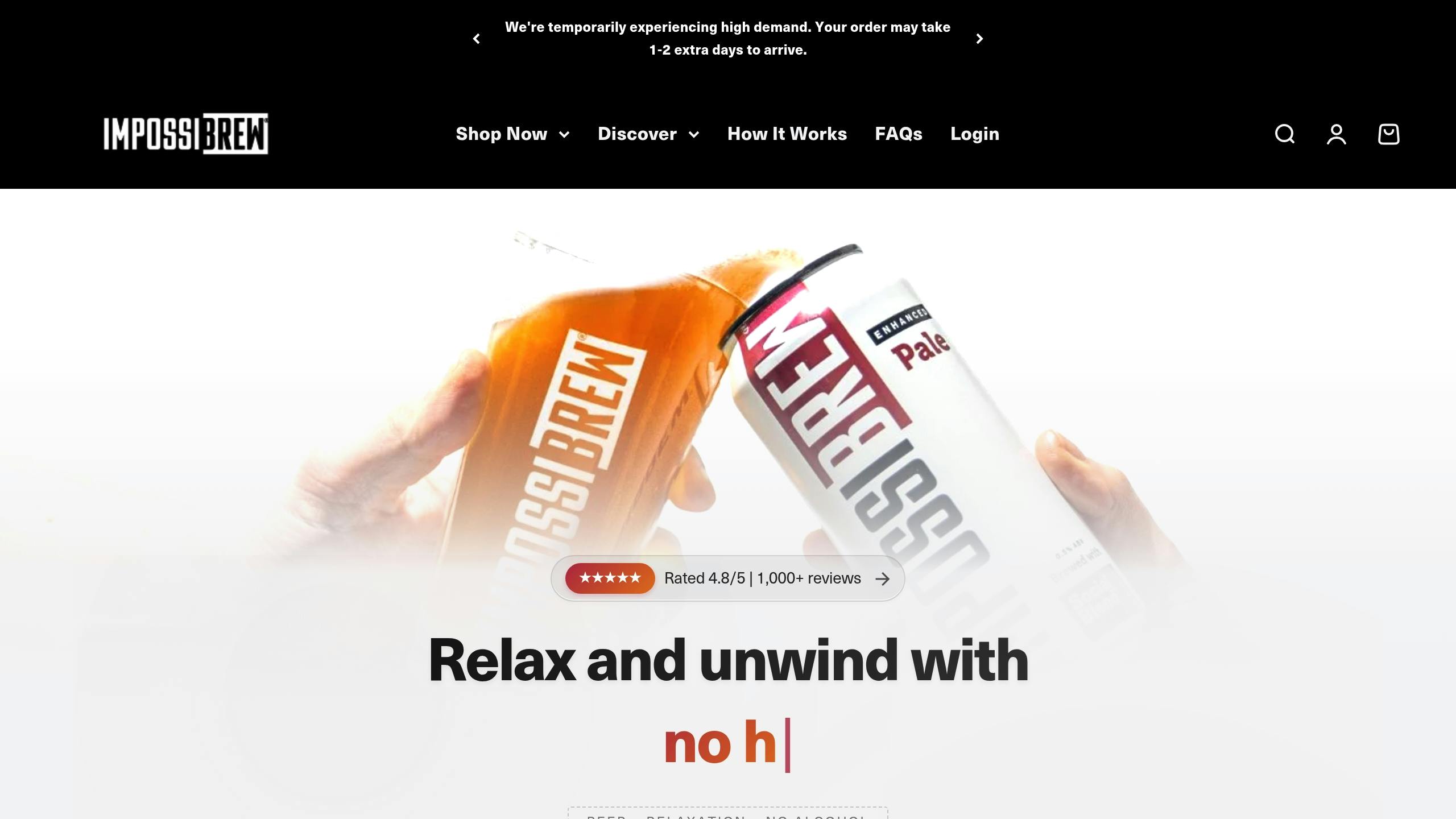
IMPOSSIBREW®'s Social Blend™ technology is a standout in non-alcoholic beer production. By blending traditional brewing with functional ingredients, they’ve created beers that deliver flavor while keeping calories low. For example, their Enhanced Lager has only 15 calories per serving - 70% fewer calories than regular beer.
This unique formula includes nootropic herbs and adaptogens like L-Theanine and organic Ashwagandha. These ingredients mimic the sensory and social effects of alcohol without the downsides. Such innovations are reshaping the market and setting new expectations for consumers.
Growth of Functional Beers
The functional beer market is growing rapidly as consumers look for drinks that go beyond basic refreshment. These beers appeal to health-conscious individuals and contribute to the market's expansion. A great example is IMPOSSIBREW®'s Enhanced Pale Ale, which offers a complex flavor profile with just 26 calories per 440ml serving.
Advanced brewing techniques play a key role. For instance, Japanese brewing methods and hops like Sorachi Ace are used to improve flavor and mouthfeel without adding extra calories.
| Beer Type | Calories (per serving) | Key Features |
|---|---|---|
| Traditional Low-Calorie Beer | 67-99 | Standard brewing process |
| IMPOSSIBREW® Enhanced Lager | 15 | Social Blend™ technology, gluten-free |
| IMPOSSIBREW® Enhanced Pale Ale | 26 (440ml) | Nootropic ingredients, vegan-friendly |
sbb-itb-a752bf8
Consumer Needs and Low-Calorie Beer
The demand for low-calorie beer is on the rise as more people look for beverages that fit into a healthier lifestyle. Breweries are stepping up by creating products that deliver the classic beer experience while catering to specific health-conscious needs. This shift is all about meeting modern preferences with products tailored to special diets.
Special Diet Options
Consumers want drinks that work with their dietary restrictions but still taste great. To meet this demand, breweries are tweaking their production methods to create diet-friendly beers. A standout example is IMPOSSIBREW®'s Enhanced Lager, which is both gluten-free and vegan, with only 15 calories.
| Beer Type | Calories | Dietary Features |
|---|---|---|
| Molson Canadian 67 | 67 | Low-carb |
| Peroni Leggera | 92 | Mediterranean-style light |
| Rolling Rock Green Light | 83 | Low-carb, light |
| IMPOSSIBREW® Enhanced Lager | 15 | Gluten-free, vegan |
Customer Response Data
Consumer feedback highlights a growing interest in beers that offer more than just fewer calories. Health-conscious buyers increasingly value options with added benefits, like vegan or gluten-free certifications. This trend is evident in the reception of products like IMPOSSIBREW®, which has seen rising demand thanks to its alignment with these lifestyle choices.
These shifts in preferences are pushing breweries to innovate in the health-focused beer market, setting new benchmarks for what it means to brew with wellness in mind.
Conclusion: Market Outlook
The low-calorie beer market is poised for growth as breweries adapt to shifting consumer tastes. With advanced brewing techniques and new ingredients, brewers are crafting beers that are both flavorful and lower in calories. By using natural sweeteners and specialized ingredients, they’re able to deliver rich, complex flavors without the extra calories.
There’s also growing interest in the functional beer segment, where products offer more than just fewer calories. For instance, IMPOSSIBREW®'s Enhanced Lager and Pale Ale, featuring their Social Blend™ technology, provide vegan-friendly, gluten-free, non-alcoholic options that appeal to health-conscious drinkers. These types of innovations highlight the potential for breweries to cater to a more mindful audience.
New technologies are also helping brewers reduce calories without compromising taste. High-temperature mashing, for example, allows for calorie reduction while retaining the beer’s signature flavor.
The market is gaining traction in products that combine several health-focused features:
| Trend | Market Impact | Consumer Benefit |
|---|---|---|
| Functional Ingredients | Rising interest in enhanced beverages | Offers health perks beyond calorie cuts |
| Alternative Sweeteners | Delivers bold flavors with fewer calories | Supports dietary preferences |
| Specialized Brewing | Improved production methods | Expands choices for mindful consumers |
These developments underscore the growing demand for beers that balance taste with health benefits. Consumer trends indicate that low-calorie beers offering both flavor and functional perks will continue to shape the market. By blending traditional brewing expertise with modern health-focused innovations, breweries are redefining the beer experience for today’s mindful drinkers.
FAQs
How are calories removed from beer?
Breweries cut calories by using fermentable sugars like rice and corn syrups, which allow for nearly complete fermentation. They also tweak mashing temperatures and use low-attenuation yeast to reduce both alcohol and calorie levels.
What beers have the lowest calorie counts?
A number of popular beers keep calorie counts under 100 per serving. Here's a quick look:
| Beer Brand | Calories |
|---|---|
| Miller64 | 64 |
| Molson Canadian 67 | 67 |
| Michelob Ultra | 95 |
| Miller Light | 96 |
| Corona Light | 99 |
| Yuengling Light Lager | 99 |
For even fewer calories, non-alcoholic options like IMPOSSIBREW® are a great choice. They offer a beer-like taste, are vegan-friendly, gluten-free, and come with functional benefits.

